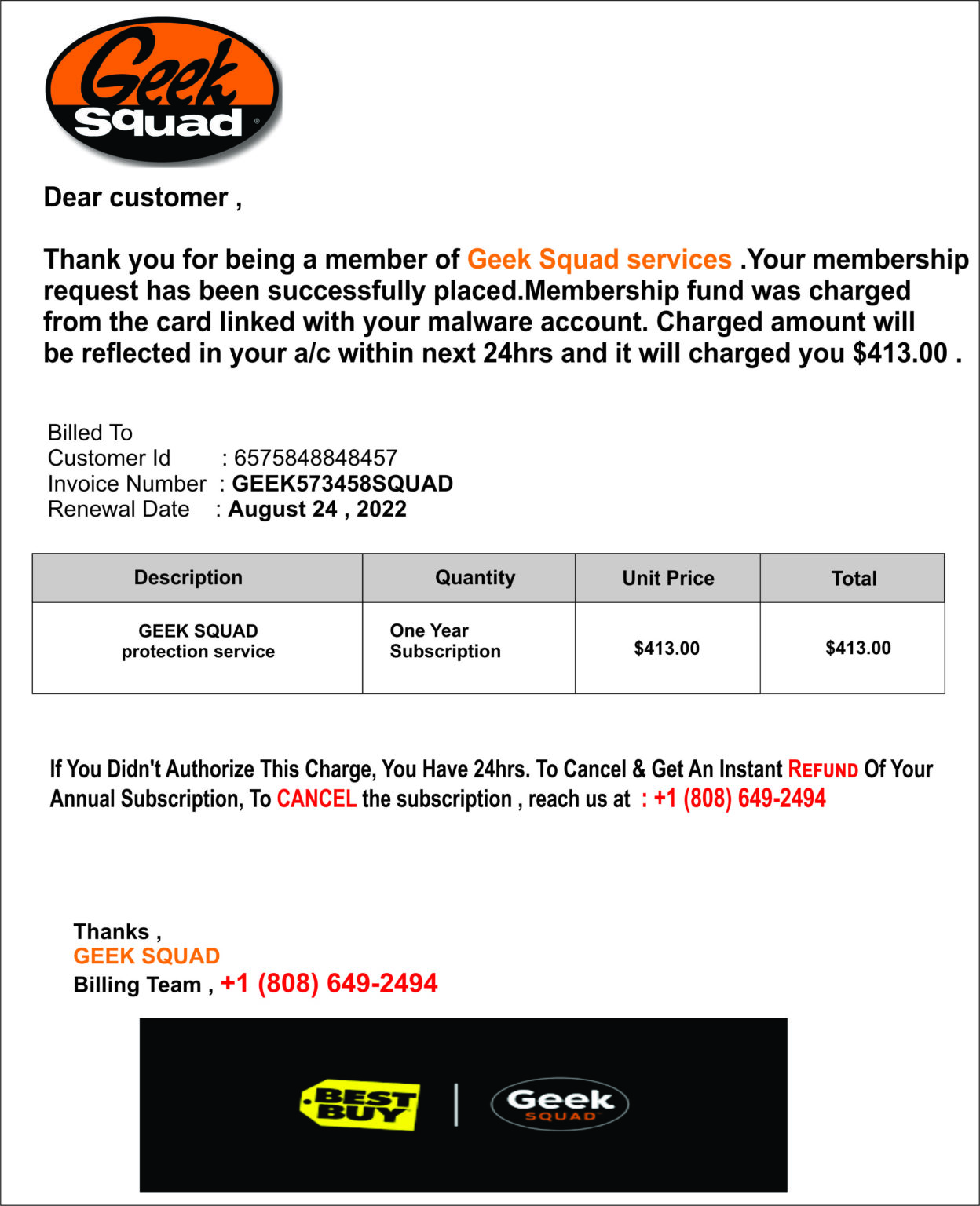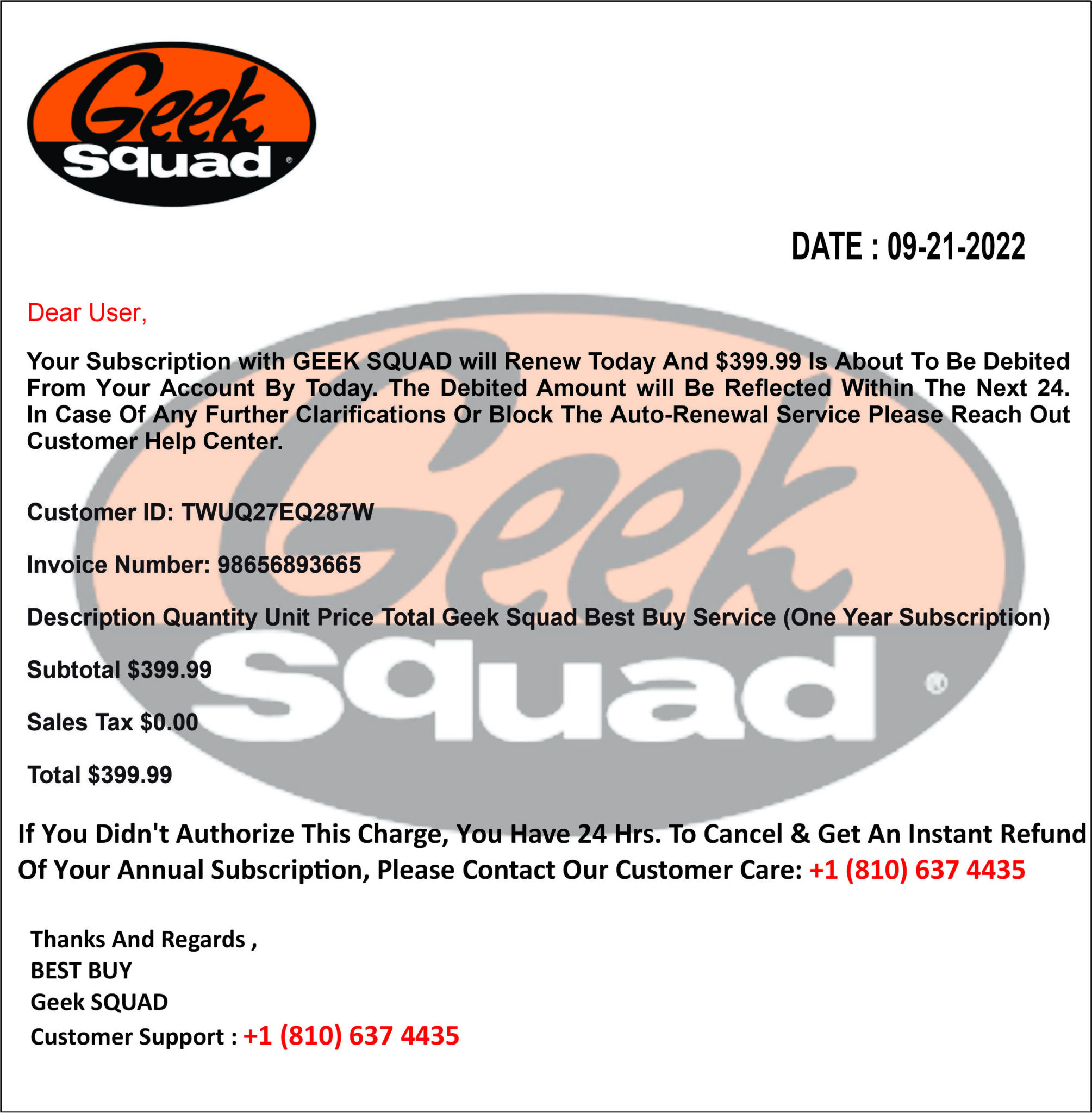Imagine this: You're scrolling through your emails, minding your own business, when you see an invoice from McAfee. "Oh no," you think, "did I accidentally subscribe to something?" But wait—something feels off. The email looks sketchy, the language is weird, and you don't remember buying anything from McAfee recently. Welcome to the world of McAfee invoice scams, where cybercriminals try to trick you into paying for services you didn't authorize.
This isn't just a random phishing scheme—it's a growing problem that affects thousands of people every year. Cybercriminals are getting smarter, and their tactics are evolving faster than ever. So, how do you protect yourself? How can you spot these scams before they hit your wallet? In this article, we'll dive deep into the world of McAfee invoice scams, breaking down what they are, how they work, and most importantly, how to avoid them. Let's get started.
But first, let's set the stage. McAfee is one of the biggest names in cybersecurity, trusted by millions of users worldwide. Unfortunately, that trust also makes it a prime target for scammers. These crooks use the McAfee name to create fake invoices, hoping to dupe unsuspecting victims into paying for services they never signed up for. If you've ever fallen victim to this kind of scam—or even if you're just curious about staying safe online—this article is for you.
- Unleashing The Power Of Dogxxxxxx A Comprehensive Guide
- Unveiling Daniel Giersch His Life Controversies Explained
- Sophie Rain From Waitress To 50 Million Onlyfans Star 2024 Update
- Daisy Melanin Viral Video Original The Buzz Thats Got Everyone Talking
- Discover Mydesi Net Your Guide To Desi Entertainment Culture
What Exactly Is a McAfee Invoice Scam?
A McAfee invoice scam is a type of phishing attack where cybercriminals send fake invoices to unsuspecting victims. These emails often look legitimate, complete with McAfee logos and branding, but they're anything but real. The goal is simple: trick you into clicking a link, downloading malware, or paying for a service you didn't authorize.
Here's how it usually works:
- You receive an email that appears to come from McAfee.
- The email claims you owe money for a subscription or service.
- It includes a link to "view" or "pay" the invoice.
- If you click the link, you might be taken to a fake website designed to steal your personal information or install malware on your device.
These scams are cleverly designed to exploit fear and confusion. By using the McAfee name, scammers tap into the trust people have in the brand, making it easier to trick victims into falling for their schemes. But don't worry—we'll show you how to spot these scams and stay safe.
- Jackerman Videos Behind The Scenes Whats Next Watch Now
- Vegamovies 2025 18 Your Ultimate Guide To The Future Of Adult Entertainment
- Palang Tod Web Series Cast Story Where To Watch On Ullu
- Ullu Web Series 2025 Balam Pichkari More News Updates
- Hdhub4u Your Guide To Free Movie Downloads Streaming Alternatives
How to Spot a Fake McAfee Invoice
Now that you know what a McAfee invoice scam looks like, let's talk about how to identify one. Here are some red flags to watch out for:
1. Check the Email Address
Legitimate McAfee emails will always come from an official McAfee domain, like @mcafee.com. If the email address looks suspicious or comes from a random domain, it's probably a scam. For example:
- Legitimate: support@mcafee.com
- Suspicious: mcafee-support@randomdomain.com
2. Look for Poor Grammar and Spelling
Scammers aren't exactly known for their impeccable grammar. If the email is full of typos, awkward phrasing, or strange formatting, it's likely fake. Legitimate companies take pride in their communication, so anything that looks sloppy should raise a red flag.
3. Be Wary of Urgent Language
Scammers often use urgent language to pressure you into acting quickly. Phrases like "Immediate action required" or "Your account will be suspended" are classic tactics designed to scare you into clicking a link or making a payment. Take a deep breath and double-check before doing anything.
4. Verify the Link
Hover over any links in the email (but don't click them!) to see where they lead. If the URL doesn't match McAfee's official website, it's probably a scam. Always type the URL manually into your browser instead of clicking on links in suspicious emails.
Why Do Scammers Target McAfee?
McAfee is a household name in the cybersecurity world, trusted by millions of users worldwide. This reputation makes it an attractive target for scammers. By impersonating McAfee, they can exploit the trust people have in the brand, making it easier to dupe victims into falling for their schemes.
But why McAfee specifically? Here are a few reasons:
- Brand Recognition: McAfee is one of the most well-known cybersecurity brands, making it an easy target for scammers.
- Global Reach: McAfee has millions of users around the world, increasing the pool of potential victims.
- Perceived Authority: People trust McAfee to keep them safe online, so they're less likely to question an email that appears to come from the company.
Scammers know this, and they use it to their advantage. By pretending to be McAfee, they can bypass people's natural skepticism and increase their chances of success.
The Consequences of Falling for a McAfee Invoice Scam
Falling for a McAfee invoice scam can have serious consequences. Here's what could happen if you fall victim:
1. Financial Loss
The most immediate consequence is financial loss. If you pay for a service you didn't authorize, that money is likely gone for good. Scammers often use untraceable payment methods, making it nearly impossible to recover your funds.
2. Identity Theft
Some McAfee invoice scams are designed to steal your personal information, such as your name, address, and credit card details. This information can be used to commit identity theft, leading to even more problems down the line.
3. Malware Infection
Clicking on a malicious link or downloading an attachment from a fake invoice can infect your device with malware. This can compromise your personal data, slow down your computer, or even give hackers remote access to your system.
These consequences are serious, which is why it's so important to stay vigilant and avoid falling for these scams in the first place.
Real-Life Examples of McAfee Invoice Scams
To give you a better idea of what these scams look like, let's take a look at some real-life examples:
Example 1: The Urgent Payment Email
In this scam, victims receive an email claiming they owe money for a McAfee subscription. The email includes a fake invoice and a link to "pay now." If the victim clicks the link, they're taken to a fake website where they're asked to enter their payment information.
Example 2: The Account Suspension Scare
In this variation, scammers send an email claiming the victim's McAfee account will be suspended unless they take immediate action. The email includes a link to "verify" their account, which actually leads to a phishing site designed to steal their login credentials.
Example 3: The Malware Attachment
Some McAfee invoice scams include a malicious attachment disguised as an invoice. If the victim downloads and opens the file, it installs malware on their device, giving hackers access to their personal information.
These examples illustrate just how varied and sophisticated these scams can be. Always stay alert and double-check before clicking any links or downloading any attachments.
How to Protect Yourself from McAfee Invoice Scams
Now that you know what to look for, let's talk about how to protect yourself from these scams. Here are some tips to keep you safe:
1. Verify the Source
Always verify the source of any email claiming to be from McAfee. Check the email address, look for typos, and hover over any links to see where they lead. If anything looks suspicious, delete the email immediately.
2. Use Official Channels
Instead of clicking on links in suspicious emails, go directly to McAfee's official website to check your account status or manage your subscriptions. This ensures you're interacting with the real McAfee, not a scammer.
3. Enable Two-Factor Authentication
Two-factor authentication adds an extra layer of security to your accounts, making it harder for scammers to access your information even if they have your login credentials.
4. Install Antivirus Software
Having up-to-date antivirus software is crucial for protecting your device from malware. Make sure you're using a reputable antivirus program and keep it updated regularly.
5. Educate Yourself
The more you know about scams and phishing tactics, the better equipped you'll be to spot them. Stay informed about the latest threats and share your knowledge with friends and family to help keep everyone safe.
What to Do If You Fall Victim to a McAfee Invoice Scam
Despite your best efforts, it's still possible to fall victim to a scam. If this happens, here's what you should do:
1. Contact Your Bank
Notify your bank or credit card company immediately to report the fraud. They may be able to reverse the charges or freeze your account to prevent further damage.
2. Change Your Passwords
If you entered your login credentials on a phishing site, change your passwords immediately. Use strong, unique passwords for each of your accounts to reduce the risk of further breaches.
3. Run a Virus Scan
Scan your device for malware using a reputable antivirus program. If you find any infections, follow the program's instructions to remove them.
4. Report the Scam
Report the scam to the appropriate authorities, such as the FBI's Internet Crime Complaint Center (IC3) or your local law enforcement agency. This helps track down the scammers and prevent others from falling victim to the same scheme.
Resources for Staying Safe Online
Here are some additional resources to help you stay safe from online scams:
These resources provide valuable information on how to protect yourself from scams and what to do if you fall victim to one.
Conclusion
In today's digital world, staying safe online is more important than ever. McAfee invoice scams are just one example of the many threats out there, but with the right knowledge and tools, you can protect yourself and your loved ones from falling victim. Remember to stay vigilant, verify the source of any suspicious emails, and use official channels to manage your accounts.
So, what's next? Take a moment to review the tips we've covered and make sure you're implementing them in your daily life. Share this article with friends and family to help spread awareness, and don't hesitate to reach out if you have any questions or concerns. Together, we can fight back against cybercriminals and create a safer online environment for everyone.
Table of Contents
- What Exactly Is a McAfee Invoice Scam?
- How to Spot a Fake McAfee Invoice
- Why Do Scammers Target McAfee?
- The Consequences of Falling for a McAfee Invoice Scam
- Real-Life Examples of McAfee Invoice Scams
- How to Protect Yourself from McAfee Invoice Scams
- What to Do If You Fall Victim to a McAfee Invoice Scam
- Resources for Staying Safe Online
- Conclusion
- Bflix To Movies
- Ms Sethi From India To Onlyfans Fame Beyond The Full Story
- Kara Swisher Amanda Katz A Love Story Inside Their Relationship
- 42 Sites Like 123movies
- Latest On Ullu Web Series Free Content More


